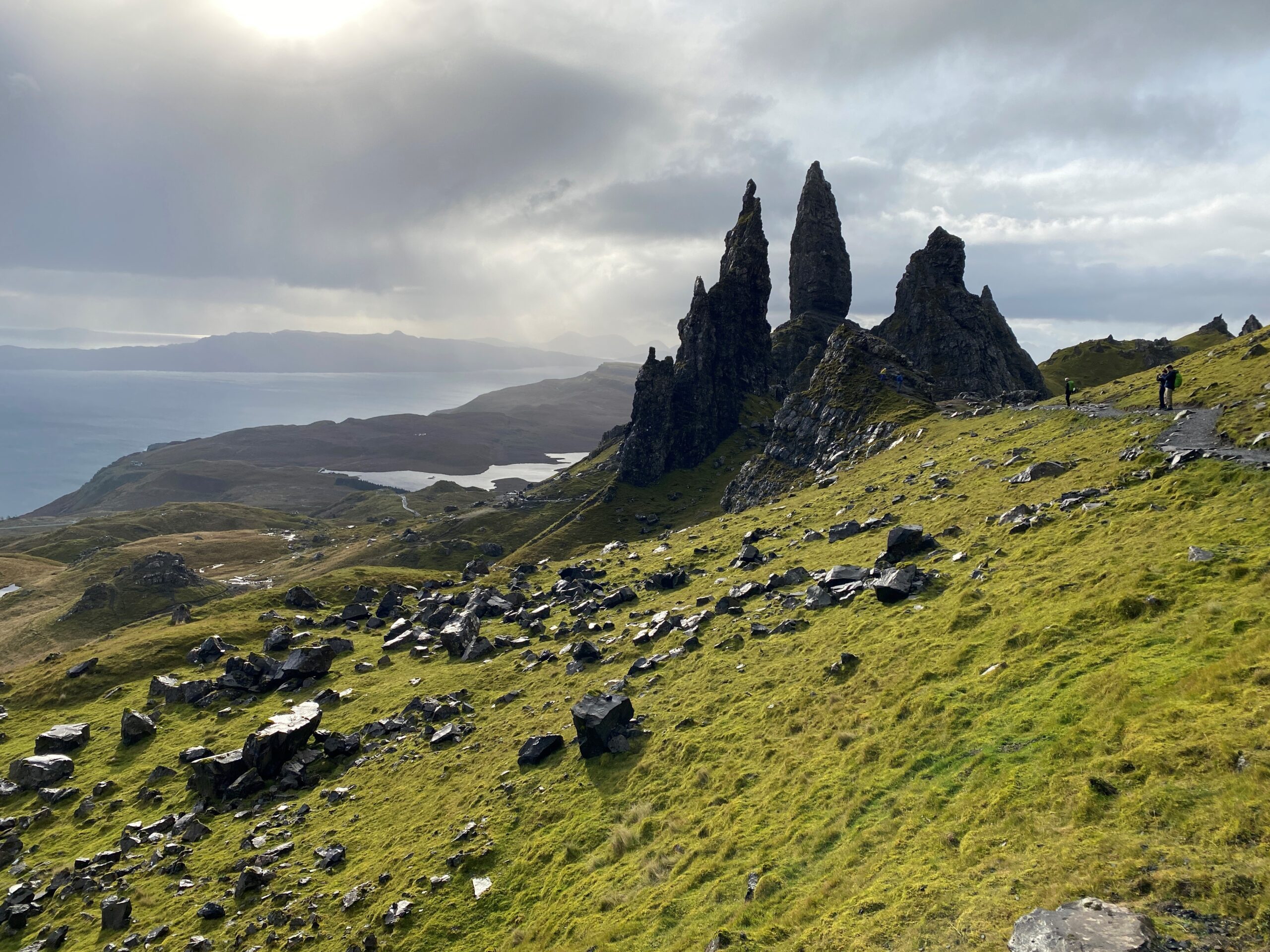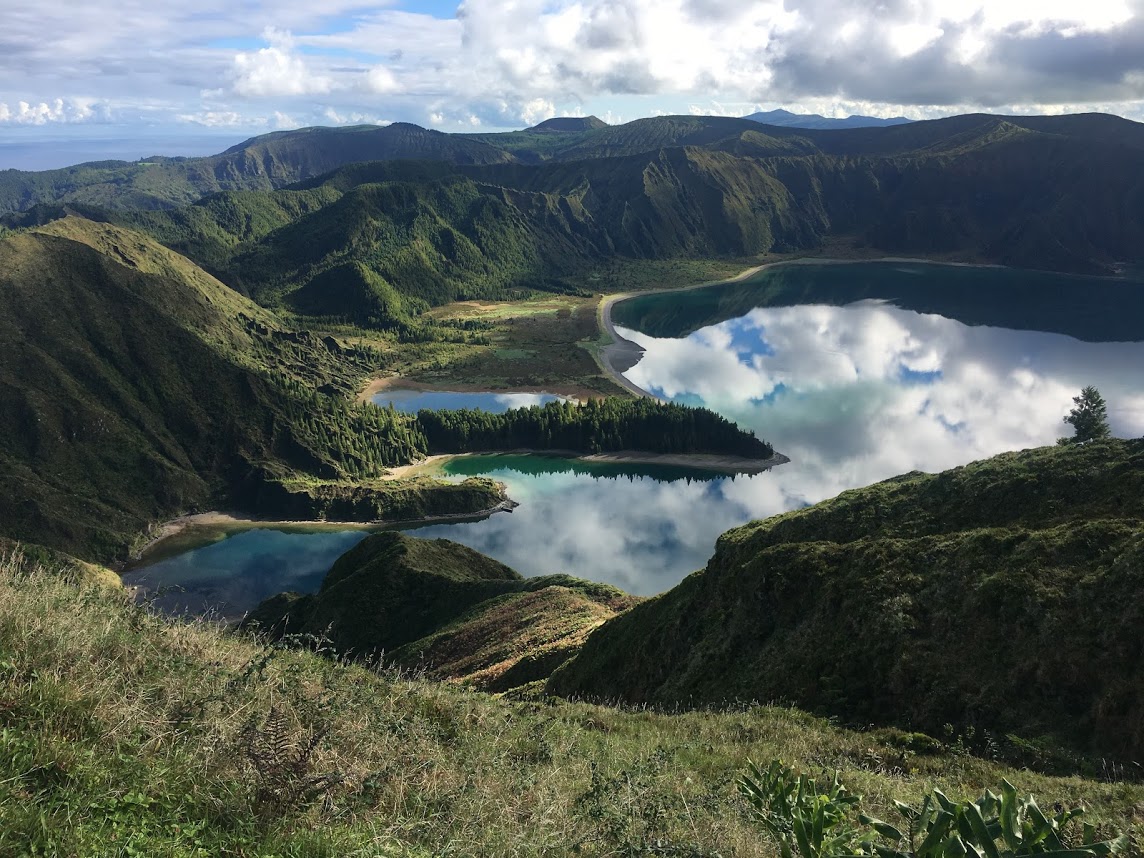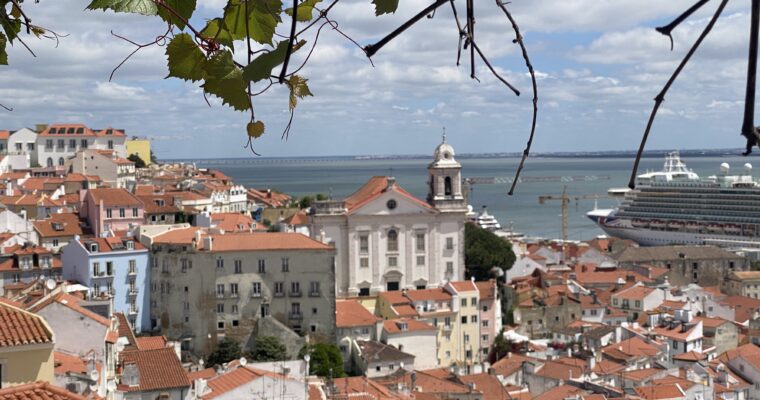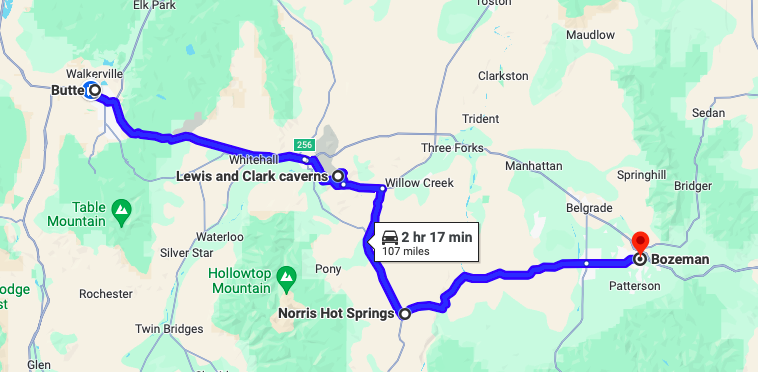R and I spent five and a half days driving around and exploring São Miguel Island in the Portuguese archipelago of the Azores. Locally, it is referred to as The Green Island. I just called it stunning.

Turns out the Azores make a great micro trip. We are part-time travelers with full-time jobs, so we have to maximize our weekends, holidays and vacations days. It is very easy to see all of São Miguel Island in a relatively short amount of time.
We knew it would be pretty and we figured we would have a good time. It was and we did. However, there were definitely some surprises in store for us on this particular adventure. Most were good. But there were a few that were not so good. Below are 10 surprising things we learned about São Miguel Island, Azores, Portugal:
The size of São Miguel Island
At 293 square miles and with a population of 150,000, São Miguel Island is the largest and most populous island in the Azores. However, large is relative. Five and half days was more than enough time to see the entire island. By the fifth day, we were actually struggling a bit to find something new to do and we even went back to a couple of places. I did not realize how manageable the island is until we had been there a couple of days. It really is possible to see and do everything on your to-do list in less than a week.

Driving around the island
Everything I read said it was easy to drive a rental car around São Miguel Island, that the roads are well maintained and relatively car free. This is all true. But what I failed to read anywhere was a warning about the teeny-tiny streets through towns. Every car on the island is small because they have to be. The roads are narrow and although they are sometimes a one-way street, often they are not.
The most challenging part is maneuvering around parked cars. People park pretty much wherever they want. So you have to figure out how to get around them, often with oncoming traffic. Oh, and sometimes there is also a pedestrian or two walking down the street because sidewalks are microscopic or nonexistent.
Perhaps, if you are vising from another part of the world that has a similar driving situation, you will not be fazed. But coming from the western U.S. (where everyone drives a truck), this was a whole new driving environment for us and one we were not mentally prepared for.
Other thoughts on driving around São Miguel Island:
- Official signage will sometimes point you down a dirt road. Beware.
- Eventually, you will be stopped by a herd of cows being moved to a new pasture. Slow down.
- Tractors use all the same roads you do. Watch out.

Talking to the locals
Okay, so we knew the official language was Portuguese before we left. But what we did not know was that many of the islanders would only speak Portuguese. We got around and bought stuff just fine, but it has been a long time since I have visited a place where English was not readily known. It was a bit more challengimg, but it was also a nice change of pace.
The weather on São Miguel Island
I knew the weather could change on a dime and we expected rain at some point. However, we mostly enjoyed gorgeous, warm weather. So warm, in fact, that most of the clothes I packed were all wrong for the weather (60s in Idaho means something very different than 60s in the Azores). With the sun and the humidity, my long-sleeve shirts were completely useless. I am not sure if we just got lucky or what, but I recommend preparing yourself for warmer rather than cooler weather.
Side note: hurricanes do make it to the Azores (who knew?), although they are rare and more mild. One rolled through the day after we left and although the danger was minimal, there were driving restrictions.

The food on São Miguel Island
I actually had high expectations for the food based on everything I read. But my reality was much different and overall, I found the food to be just meh. Our first restaurant meal, chosen because of a local’s recommendation and a busy atmosphere, left much to be desired. We had the famous Cozido das Furnas (or Furnas stew), a dish of meat and vegetables cooked for six hours in the ground by Mother Nature. To be fair, I did not read good reviews of the stew itself. But we were excited for the experience. However, it was bland and rather expensive, and it felt like this first meal set the stage for the rest of our meals.
In addition, places to eat are a little hard to find in the smaller towns. Often, they have a bar in front where local men like to stand outside and smoke. To be honest, it is a little intimating. We found ourselves gravitating toward grocery stores to fix our own meals instead of looking for a place to eat.
Pineapple saved the day!
Thankfully, there were some exceptions to the meh food. The Azorean pineapple is definitely a winner, as are most of the pineapple dishes made from them. As you drive around the island, you notice dairy cows everywhere (including the road). Naturally then, the cheese is pretty darn tasty. We enjoyed the yogurt as well. In fact, the yogurt section in the grocery store was much larger than any I have ever seen. The local bread, Bolo Lêvedo, was very good and very versatile. It worked for savory dishes as well as for sweet dishes. And speaking of sweet, I have no complaints about the pastries. They were delicious! Although most of our restaurant meals were disappointing, we did not go hungry while we were there.

Tourists, or lack thereof
One of my favorite parts about this trip was the lack of tourists. They existed, but they existed in far fewer numbers (and packs) than I am used to seeing. We only encountered them at major tourist stops and even then, it was not hard to find a private spot to enjoy whatever it was you came to see. Sadly, I do not think the lack of tourists will last much longer. This place is too great.

You don’t have to watch out for dangerous critters
Good news: there are no poisonous insects or snakes on São Miguel Island. That means you can hike around to your heart’s content and not have to worry about stepping on something that can hurt you. Also, I did not get bit by a single mosquito. I did not even see one! If they exist on São Miguel Island, they did bother me at all. And we spent a lot of time outdoors.
The cost of travel on São Miguel Island
Things are very affordable in the Azores. For example, I paid €1 for a large slice of pineapple cake from a local baker. It was awesome! When you visit places like the tea and pineapple plantations or the ceramics manufacturer, the price to enter is zero. That’s right. It is free to walk right in and roam around. And very few areas are off limits. You just walk around and check out how things are made. The workers ignore you and go on their merry way, just doing their job. It is a novel experience and it is hard to believe you do not have to pay anything to enter. Of course, most of the places we visited sold goods. But even those goods were affordable. I gladly paid €1.50 for my green tea and €8 for my handmade ceramic dish.
There are exceptions of course. Where there are tourists, there will be higher prices. We found a company online located in Ponta Delgada (the capital cities where most of the tourists hang out) that would rent us a kayak for €30 per person. Thankfully, we ignored that and instead found a place in Sete Cidades (a small town on the lake with much fewer tourists) that rented us a kayak for €10 total. That was the Azorean price we had come to love and expect.

The architecture all over the island
I loved the use of lava rock in the Azores. Here in Idaho, people sometimes build homes from lava rock. We call them giraffe houses because they look like a giraffe’s hide. In the Azores, people build just about everything from lava rock, but we rarely saw anything that resembled a giraffe. The towns are quite beautiful with their narrow streets, old buildings and towering churches. Walking around and admiring the way they were built is very enjoyable. You will fall in love with the small, seaside towns on São Miguel Island. It is impossible not to.
The capital city of São Miguel Island
Most of the things I read about Ponta Delgada were not flattering. However, I enjoyed this small capital city very much. It has a lot of charm. Plus, it is the best place to go shopping and find a bite to eat. I would not have wanted to make it my home base while on the island, but it made for an enjoyable afternoon visit.

Conclusion
I hesitate to say too many wonderful things about São Miguel Island and the time we spent there. I do not want it ruined by mass tourism. However, I have no control over that. For now, São Miguel Island in the Azores is lovely, with just enough surprises to keep even a seasoned Jane on her toes.
Related posts you might like:
Or if you want to see all of our posts, visit Past Posts





Leave a Reply